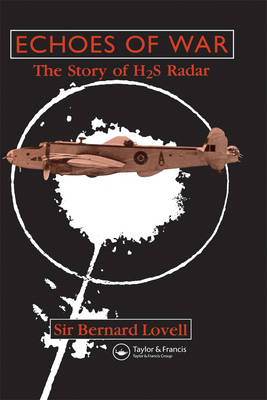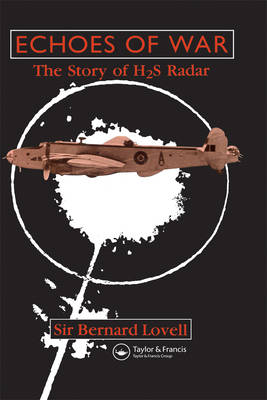
Door een staking bij bpost kan je online bestelling op dit moment iets langer onderweg zijn dan voorzien. Dringend iets nodig? Onze winkels ontvangen jou met open armen!
- Afhalen na 1 uur in een winkel met voorraad
- Gratis thuislevering in België vanaf € 30
- Ruim aanbod met 7 miljoen producten
Door een staking bij bpost kan je online bestelling op dit moment iets langer onderweg zijn dan voorzien. Dringend iets nodig? Onze winkels ontvangen jou met open armen!
- Afhalen na 1 uur in een winkel met voorraad
- Gratis thuislevering in België vanaf € 30
- Ruim aanbod met 7 miljoen producten
Zoeken
€ 126,95
+ 253 punten
Uitvoering
Omschrijving
August 1939 was a time of great flux. The fear of impending war fueled by the aggression of Nazi Germany forced many changes. Young people pursuing academic research were plunged into an entirely different kind of research and development. For Bernard Lovell, the war meant involvement in one of the most vital research projects of the war-radar. Echoes of War: The Story of H2S Radar presents a passionate first-hand account of the development of the Home Sweet Home (H2S) radar systems during World War II. The book provides numerous personal insights into the scientific culture of wartime Britain and details the many personal sacrifices, setbacks, and eventual triumphs made by those actively involved. Bernard Lovell began his work on airborne interception radar in Taffy Bowen's airborne radar group. He was involved in the initial development of the application of the 10 centimeter cavity magnetron to airborne radar that revolutionized radar systems. In the autumn of 1941, the failure of Bomber Command to locate its target over the cloudy skies of Europe prompted the formation of a new group to develop a blind bombing system. Led by Lovell, this group developed the H2S radar system to identify towns and other targets at night or during heavy cloud cover. H2S first saw operational use with the Pathfinder Squadrons in the attack on Hamburg during the night of January 30-31, 1943. Two months later, modified H2S units installed in Coastal Command aircraft operating over the Bay of Biscay had a dramatic tactical effect on the air war against U-boats. The tide had begun to turn. In this fascinating chronicle of the H2S radar project, Sir Bernard Lovell recreates the feel and mood of the wartime years.
Specificaties
Betrokkenen
- Auteur(s):
- Uitgeverij:
Inhoud
- Aantal bladzijden:
- 312
- Taal:
- Engels
Eigenschappen
- Productcode (EAN):
- 9780367403058
- Verschijningsdatum:
- 19/06/2019
- Uitvoering:
- Paperback
- Formaat:
- Trade paperback (VS)
- Afmetingen:
- 152 mm x 234 mm
- Gewicht:
- 635 g

Alleen bij Standaard Boekhandel
+ 253 punten op je klantenkaart van Standaard Boekhandel
Beoordelingen
We publiceren alleen reviews die voldoen aan de voorwaarden voor reviews. Bekijk onze voorwaarden voor reviews.











